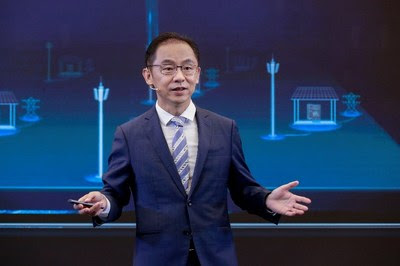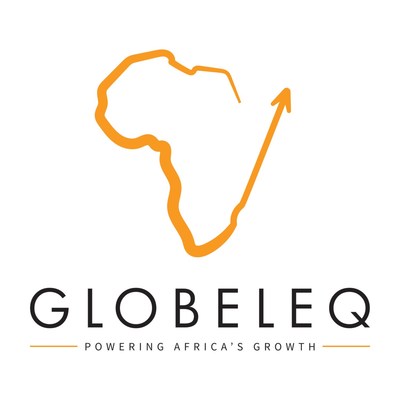Open source collaboration platform delivers alternatives to tools like Slack, Trello, and Notion to help R&D teams improve productivity and accelerate digital operations
Palo Alto, Calif., Oct. 13, 2021 (GLOBE NEWSWIRE) — Mattermost, Inc. today announced several new additions to its open source project at KubeCon® + CloudNativeCon North America 2021, launching and integrating modern project and workflow management solutions into its popular developer collaboration platform. Built for technical teams, Mattermost now provides flexible alternatives to tools like Slack®, Trello®, and Notion® through a unified platform for increased collaboration and productivity across a wide range of software development processes — from sprint planning and release management to incident resolution and retrospectives.
With heightened awareness around the urgency for remote collaboration and modernization of enterprise processes, developers have been increasingly asked to circumvent fragile processes, talent shortages, and security risks to deliver performance, innovation, and digital operations at scale. The newest update to the core Mattermost® platform emphasizes the complexities of these staggering objectives and the need for dynamic solutions that empower R&D teams with autonomy, flexibility, and security.
The launch of Mattermost’s modern project and workflow management solutions also reflects the company’s evolution beyond secure messaging to enable team alignment and operational agility across sophisticated R&D use cases. Unlike general collaboration products, the Mattermost platform now allows developers to contribute directly to its solutions and customize their workspaces to adapt to their preferred team processes. Mattermost also provides teams with the option to deploy on-premise or in a secure cloud instance. This gives companies more control over their data and assists them in meeting stringent security and privacy compliance standards such as those found in HIPAA, FINRA, GDPR, country-specific data sovereignty, and other regulatory requirements.
“As organizations navigate the shift to always-on digital operations, teams that effectively align their people, tools, and processes across each stage of the development lifecycle are increasing their velocity, improving delivery and gaining a strategic advantage,” said Ian Tien, co-founder and CEO of Mattermost. “With developers reporting that nearly 40% of their workweek is wasted due to tool fragmentation, manual tasks, fragile workflows, and service-impacting incidents and outages, we see a huge opportunity to help every R&D team in the world improve their operations and productivity with collaboration solutions built specifically for the way they work.”
Founded in 2016, Mattermost has powered over 800,000 developer workspaces worldwide and has a community of over 4,000 open source contributors who have updated the platform over 30,000 times since its initial release. Mattermost’s commercial offerings are used by over 800 organizations, including European Parliament, NASA, Nasdaq, Samsung, SAP, the United States Air Force, and Wealthfront.
“Mattermost has been unimaginably effective for our company and continues to exceed expectations with every new release,” said Daniel Gover, IT system administrator for Crossover Health. “The platform helps us ensure that we’re staying HIPAA-compliant while letting our clinicians collaborate efficiently and seamlessly.”
“Developer velocity is increasingly essential to driving digital operations and modernization across the enterprise,” said Paul Nashawaty, senior analyst for Enterprise Strategy Group. “Mattermost is helping to meet this requirement with a collaboration platform that reduces context switching and delivers visibility and control across the developer workflow and toolchain.”
This update to the Mattermost platform is now available to all users and features enhanced navigation and multiple tightly integrated collaboration tools, including:
Channels: The foundation of the Mattermost platform, Channels bring all of your team’s communication into one place, so you have complete visibility and control. Channels come with team messaging, conferencing, and file sharing features beyond general-purpose collaboration, including slash commands, code syntax highlighting, rich Markdown formatting, code snippets, and bot integrations.
Playbooks: Playbooks are prescribed workflows that streamline complex, recurring processes. Playbooks run side-by-side with Channels and make any structured process repeatable and predictable using checklists, triggers, automation, and tool integrations. Continuous improvement is built into each playbook with learnings and retrospectives.
Boards: Boards are Kanban-style task and project management solutions with clearly defined tasks, owners, checklists, and deadlines. Boards help teams increase transparency and keep all resources readily available, including documents, images, and links, and are used to help teams achieve project milestones and manage projects and tasks of any size.
Connections: Connections are integrations and extensions with leading developer tools, including GitHub®, Jenkins®, Circle CI®, GitLab®, Jira®, PagerDuty®, and ServiceNow®. Connections allow developers to turn any Channel into a CLI through built-in or custom commands to execute actions directly, such as posting to Channels, listening for new messages with incoming and outgoing webhooks. Developers can build Connections through custom apps, open APIs, plugins, and webhooks. The Mattermost App Framework allows developers to define custom interactive add-ons that support web, mobile, and desktop clients without changes. Apps can be written in any language, deployed on any HTTP server, or hosted as an AWS Lambda function.
Controls: Controls provide extensive data protection, information governance, eDiscovery, enterprise information archiving support, and identity/access management. Controls give administrators the ability to set granular permissions to control access to sensitive data and can be customized to meet your specific compliance requirements with fine-grained data retention, audit logs, the ability to programmatically archive and export records, and integration with Global Relay and Smarsh/Actiance for compliance, archiving, and analytics. Deployment options are available in on-prem or secure cloud environments to meet the strict requirements of GDPR, AICPA, CCPA, FINRA, HIPAA, and more.
To learn more about Mattermost’s developer collaboration platform, attendees can find the team at booth #S12 at KubeCon + CloudNativeCon North America 2021, or please visit the Mattermost Blog.
About Mattermost:
Mattermost is an open source platform for secure collaboration across the entire software development lifecycle. Hundreds of thousands of developers around the globe trust Mattermost to increase their productivity by bringing together team communication, task and project management, and workflow orchestration into a unified platform for agile software development.
Founded in 2016, Mattermost’s open source platform powers over 800,000 workspaces worldwide with the support of over 4,000 contributors from across the developer community. The company serves over 800 customers, including European Parliament, NASA, Nasdaq, Samsung, SAP, United States Air Force and Wealthfront, and is backed by world-class investors including Battery Ventures, Redpoint, S28 Capital, YC Continuity. To learn more, visit www.mattermost.com.
Mattermost and the Mattermost logo are registered trademarks of Mattermost, Inc. All other trademarks are the property of their respective owners.
Jeff Benanto
Mattermost
5083619001
jeff.benanto@mattermost.com






